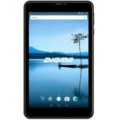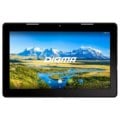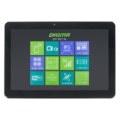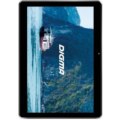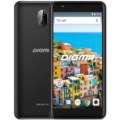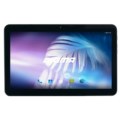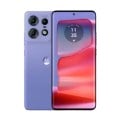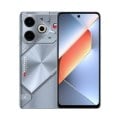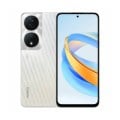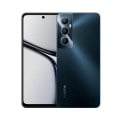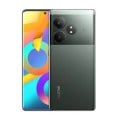Digma Optima Prime 5 3G
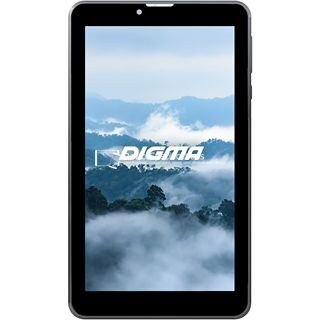

-
PROCESSOR: ARM Cortex-A7, 1200 MHz, Cores: 4
-
RAM: 1 GB
-
STORAGE: 8 GB
-
DISPLAY: 7 in, IPS, 1024 x 600 pixels, 24 bit
-
CAMERA: 1600 x 1200 pixels, 1280 x 720 pixels, 30 fps
-
BATTERY: 2200 mAh, Li-Polymer
Digma Optima Prime 5 3G comes with 1GB RAM and 8GB internal storage. To provide better storage, the device is expandable up to 64GB with an external MicroSD card. Spreadtrum SC7731C processor gives it a better performance.
The body is made of plastic and comes in black color. Tablet weighs 270 grams. Considering it’s network and technology, it supports GSM / UMTS.
The display screen is 7.0 inches with IPS display. The density won’t disappoint you either as it has 170 pixel per inch and features like multi-touch and capacitive.
The resolution of the screen is 1024 x 600 pixels. Digma Optima Prime 5 3G comes with the only single camera which is 0.3 megapixels. The feature’s camera provides is Autofocus. The video quality if 30fps.
Digma Optima Prime 5 runs on Android 8.1 Oreo Go Edition operating system. It also provides tracking along with a positioning system by GPS / AGPS.
Its battery capacity is satisfying as it comes with 2000 mAh which is non-removable.
A lot of tablets in the market does not support SIM cards but Digma Optima Prime 5 3G comes with a Dual SIM facility – Micro SIM / Mini SIM.
The tablet is released in the month of November 2018. It’s already available in the market. Find more tablets on giztop.com.
Digma Optima Prime 5 3G - SPECIFICATIONS
General
-
ModelDigma Optima Prime 5 3G
-
ReleasedNov, 2018
-
StatusAvailable
Design
-
Type Design Type called form factor refers to a mobile phone's size, shape, and style as well as the layout and position of major components of phone. There are three major form factors seen in mobile phones => bar phones, folding phones and sliding phones.Bar
-
Dimensions188 x 107.8 x 10 mm
-
Weight270 g
-
WaterproofNo
Display
-
Display Type Display Technology => A number of display technologies and types used in mobile phones => TFT (Thin Film Transistor), IPS (In-Place Switching), OLED (Organic Light Emitting Diode), AMOLED (Active-Matrix Organic Light-Emitting Diode), Super AMOLED (an even advanced version of AMOLED), Resistive Touchscreen (Resistive touchscreens contain two layer of conductive material with a very small gap between them which acts as a resistance), Capacitive Touchsceen (Capacitive touchscreen technology consists of a layer of glass coated with a transparent conductor)IPS
-
Size7 in (inches)
-
Resolution1024 x 600 pixels
-
Display Colors Display Colors is refers to the number of different shades of colors that the screen is capable of displaying => 64K colors, 256K colors and 16 million colors, Obviously 16M is highest available range of colors and better than others.16M
-
Pixel Density Pixel Density (PPI) is refers to the concentration of pixels on a particular display, measured in pixels per inch (ppi). Pixel density is calculated by dividing the diagonal pixel resolution of a display by its diagonal size, higher pixel density better display quality.170 ppi (pixels per inch)
-
Touch ScreenYes
-
FeaturesCapacitive
Multi-touch
Hardware
-
CPU The main chipset of the device.ARM Cortex-A7, 1200 MHz, Cores: 4
-
GPU GPU (Graphics Processing Unit) is a single-chip processor designed to rapidly manipulate and alter memory to accelerate the creation of images in a frame buffer intended for output to a display, This includes things such as lighting effects, object transformations, and 3D motion.ARM Mali-400 MP1, 512 MHz, Cores: 1
-
RAM (Memory) RAM (Random Access Memory) is a type of computer memory that can be accessed randomly, any byte of memory can be accessed without touching the preceding bytes that allows information to be stored and accessed quickly from random locations. RAM is the most common type of memory found in computer systems, smartphones, tablets and other electronic devices.1 GB
-
Internal Storage Internal Storage is a data storage space (flash memory) mostly used in smartphones, tablets and other electronic devices where operating system, apps, music, photos, videos, files and other user data Is stored.8 GB
-
Memory Card Slot Memory Card Slot is a special slot for inserting a memory card. Memory cards allow you to expand the phone's built-in memory, A memory card (sometimes called a flash memory card or a storage card) is a small storage medium used to store data such as text, pictures, audio, and video, for use on small, portable or remote computing devices such as mobile phones, mp3 players, digital cameras.microSD, microSDHC, microSDXC
-
Sensors Sensors are electronic components that detects and responds to some type of input from the physical environment. The specific input could be light, heat, motion, moisture, pressure and location, The output is generally a signal that is converted to use in computing systems, a location sensor, such as a GPS receiver is able to detect current location of your electronic device.Accelerometer
Software
-
Operating System OS => Every computer system run on a base software called Operating System (OS). Operating System controls all basic operations of the computer (such as smartphone, PDAs, tablet computers and other handheld devices). The Operating System allows the user to install and run third party applications (apps), apps are used to add new functionality to the device.Android 8.1 Oreo Go Edition
-
User Interface UI or user interface of a device is the look and feel of the on-screen menu system. How it works, its color scheme, how it responds to button presses, all of these things are part of the user interface.Yes
Camera
-
Video0.31 MP (megapixels)
-
Flash Flash Light => There is commonly two types of flash lights are used in camera mobile phones, LED Flash (LED flash offers lower power consumption with drive circuitry that takes up very little room, LEDs can be strobed faster than any other light source), Xenon Flash (xenon flash produces an extremely intense full-spectrum white light for a very short duration)LED
-
Front Camera640 x 480 pixels
Connectivity
-
Wi-fi Wi-Fi is a popular wireless networking technology using radio waves to provide high-speed network connections that allows devices to communicate without cords or cables, Wi-Fi is increasingly becoming the preferred mode of internet connectivity all over the world.b, g, n
-
USB2.0, Micro USB
-
GPS GPS The Global Positioning System is a satellite-based radio navigation system, GPS permits users to determine their position, velocity and the time 24 hours a day, in all weather, anywhere in the world, In order to locate your position, your device or GPS receiver must have a clear view of the sky.GPS, A-GPS
-
NFC NFC (Near field communication) is a set of standards for smartphones and similar devices to establish peer-to-peer radio communications with each other by touching them together or bringing them into proximity, usually no more than a few inches.No
-
Wireless Charging Wireless Charging (Inductive Charging) uses an electromagnetic field to transfer energy between two objects. This is usually done with a charging station. Energy is sent through an inductive coupling to an electrical device, which can then use that energy to charge batteries or run the device.No
-
Headphone JackYes
Battery
-
Capacity Battery Capacity2200 mAh, Li-Polymer

